Why This Spicy Chicken Noodle Soup Is My Secret Wellness Weapon
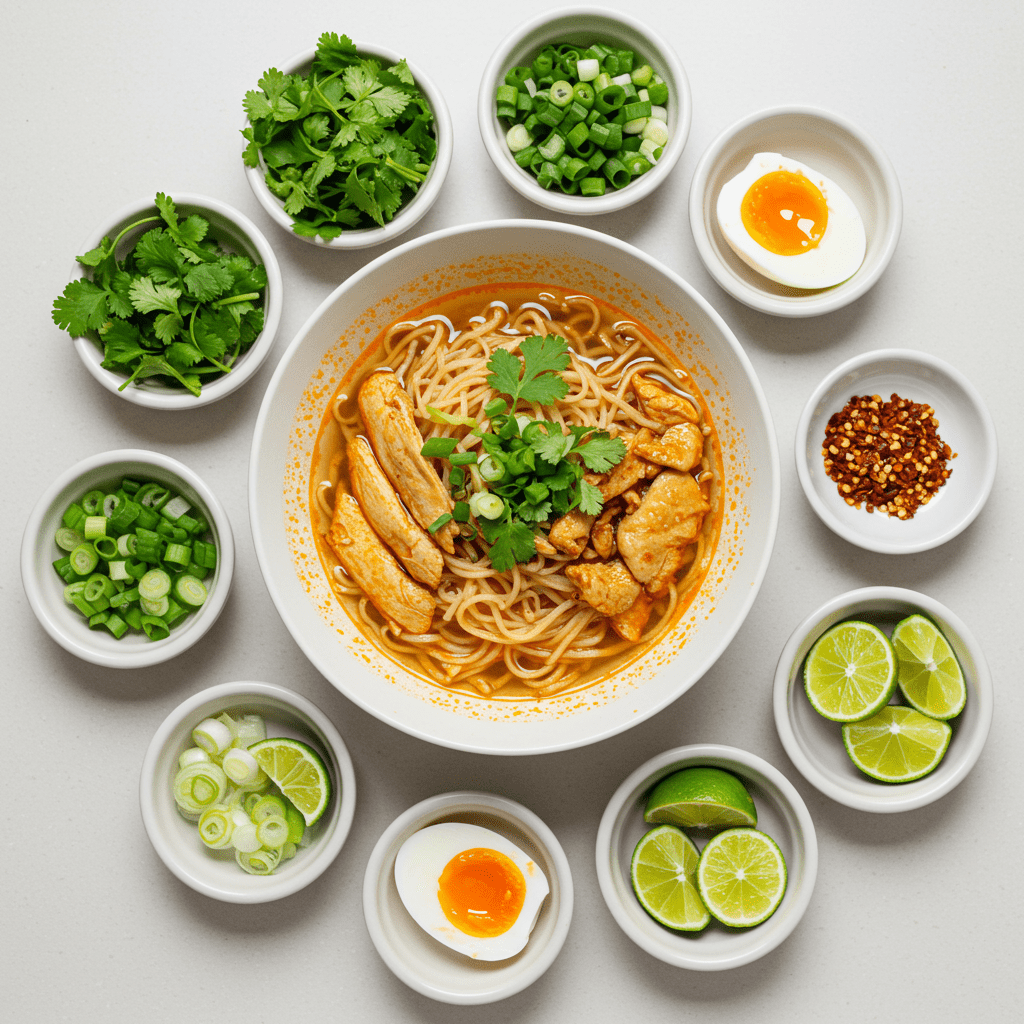
We all know that feeling—a little run down, a bit of a chill, or just in need of a serious comfort food hug. For generations, the go-to answer has been a warm bowl of chicken noodle soup.
But what if we could take that classic, comforting remedy and give it a little boost? That’s exactly what this spicy chicken noodle soup recipe does.
It combines the timeless, soul-soothing qualities of homemade chicken soup with a gentle, warming kick of sriracha. As a dietitian, I love this recipe not just for its incredible flavor but for how its ingredients work together to truly nourish your body.
It’s the perfect meal for when you need to feel taken care of.
- What Makes Chicken Soup a Go-To Comfort Food?
- Is Spicy Food Actually Good for a Cold?
- How to Choose the Best Ingredients for Your Soup
- My Step-by-Step Method for Building Amazing Flavor
- How Do I Get the Spice Level Just Right?
- Can I Make This Soup Ahead of Time?
- What Are the Best Ways to Garnish This Soup?
- A Dietitian’s Breakdown of the Nutritional Benefits
- Your Recipe Questions, Answered
- Conclusion
What Makes Chicken Soup a Go-To Comfort Food?
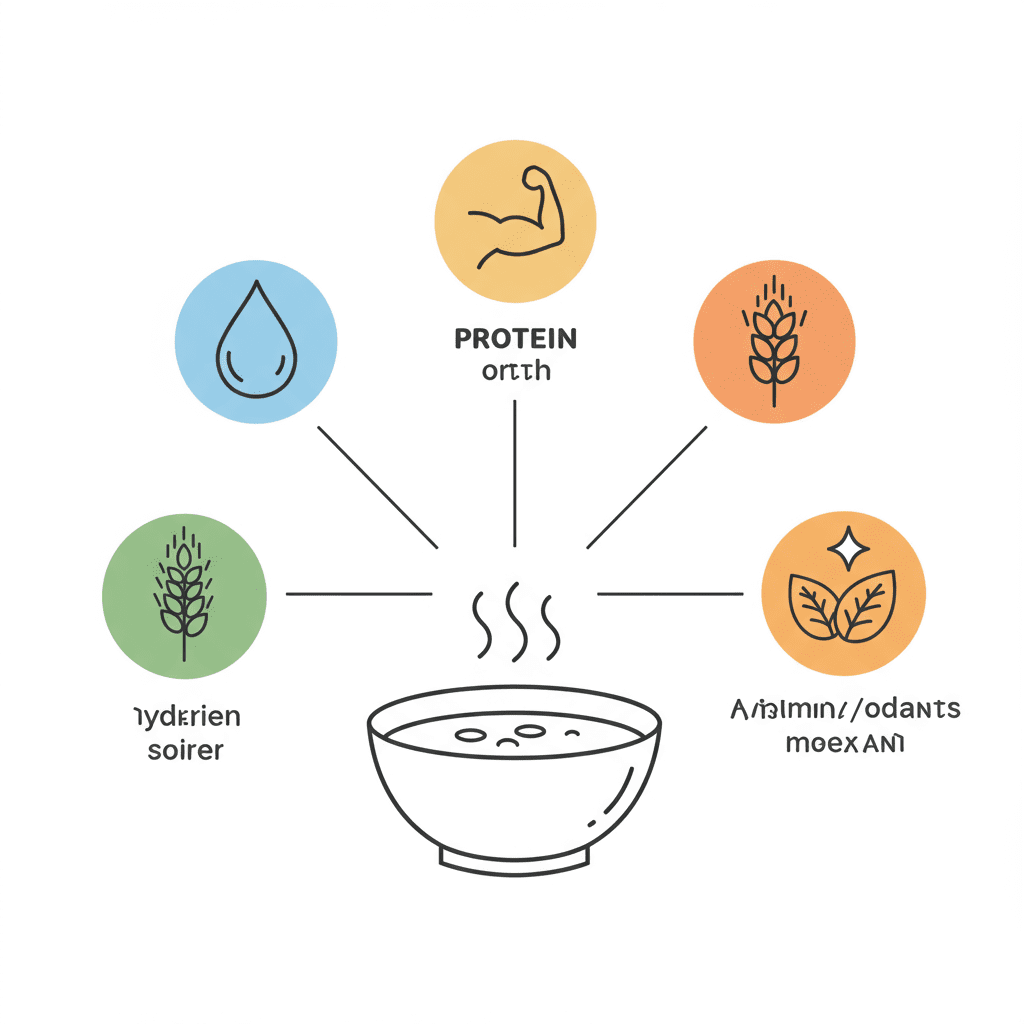
Chicken noodle soup is the universal symbol for comfort in a bowl. Its power lies in a combination of sensory experience and nutritional science.
The warmth of the broth can be incredibly soothing to a sore throat, while the steam helps open up nasal passages. From a nutritional standpoint, as a dietitian, I see a perfectly designed meal.
You get easily digestible protein from the chicken to support your body’s repair processes, carbohydrates from the noodles for much-needed energy, and essential vitamins and minerals from the vegetables. Research from the University of Nebraska Medical Center suggests that chicken soup may contain substances that function as an anti-inflammatory, potentially easing symptoms of upper respiratory tract infections.
It’s a true synergy of ingredients working to make you feel better.
Is Spicy Food Actually Good for a Cold?
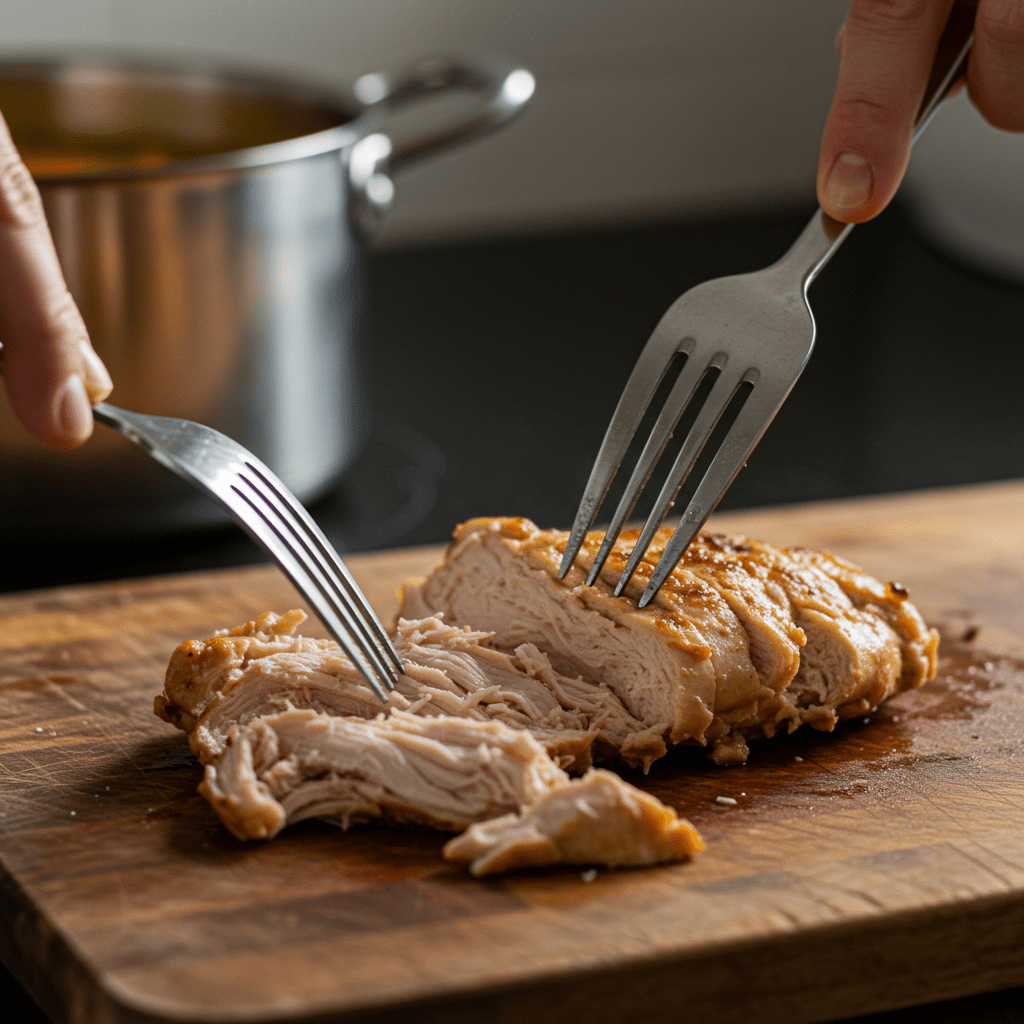
That gentle burn from the sriracha in this soup isn’t just for flavor; it may actually help you feel better. Spicy foods, particularly those containing chili peppers, are rich in a compound called capsaicin.
According to experts at the Cleveland Clinic, capsaicin can act as a natural decongestant. It works by thinning mucus, making it easier to clear from your nasal passages.
While the effect is temporary, that moment of relief can be a game-changer when you’re feeling stuffed up. Furthermore, spicy foods can have anti-inflammatory and antioxidant benefits, adding another layer of wellness to your bowl.
So, a little bit of heat does more than just wake up your taste buds.
How to Choose the Best Ingredients for Your Soup
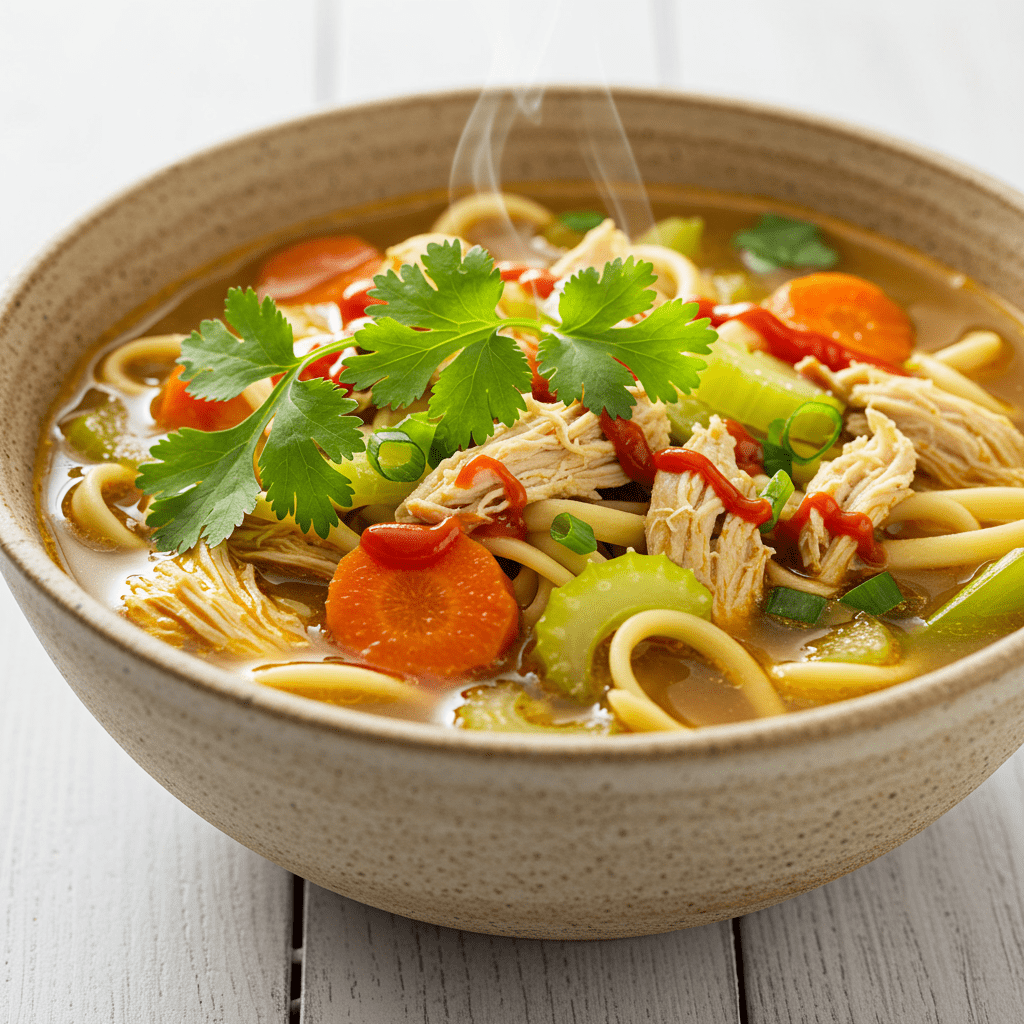
The quality of your soup is determined by the quality of your ingredients. Let’s break down the key players.
For the Chicken: You can use boneless, skinless breasts or thighs. Thighs will provide a slightly richer flavor due to a higher fat content.
For maximum nutritional benefit, consider using bone-in chicken. Simmering chicken bones releases collagen and gelatin, which are great for gut health and joint support.
Just be sure to remove the skin and bones after cooking.
For the Broth: A low-sodium chicken broth is my professional recommendation.
This puts you in control of the soup’s final saltiness. Regular broths can be surprisingly high in sodium.
For an even bigger nutritional punch, using bone broth as your base will add more protein and collagen.
For the Aromatics: Don’t skimp on fresh ginger and garlic!
These are the flavor backbone of the soup. As a dietitian, I emphasize them for their health properties, too.
As Johns Hopkins Medicine notes, ginger is excellent for easing nausea, a common issue when you’re unwell. Meanwhile, the Cleveland Clinic points to garlic’s powerful compound, allicin, which has been studied for its ability to support the immune system.
For the Noodles: Classic egg noodles are fantastic, but feel free to swap them. Whole wheat noodles will add extra fiber, or you could use a chickpea or lentil pasta for a gluten-free option with added protein.
My Step-by-Step Method for Building Amazing Flavor
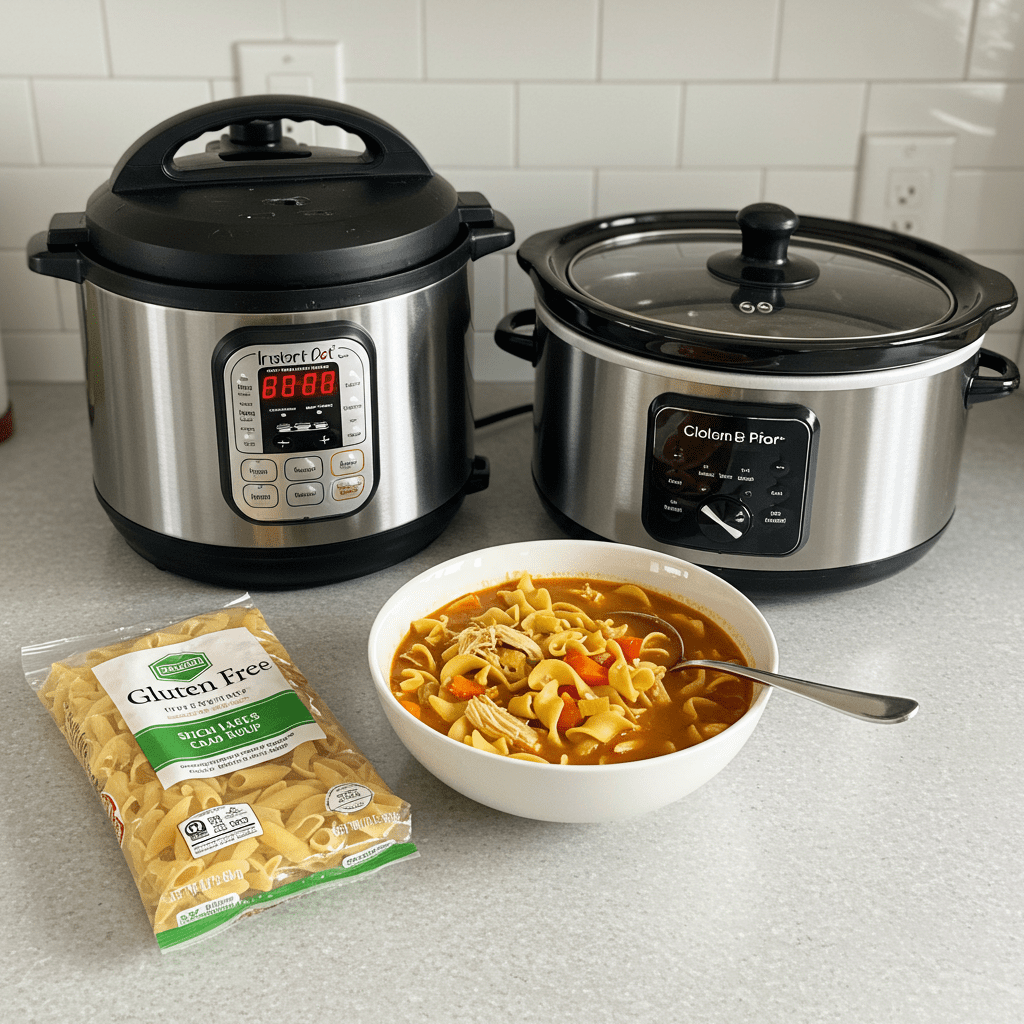
Building a truly flavorful soup is an art. Follow these steps to layer flavors for a richer, more satisfying result.
- Sauté the Foundation (Mirepoix): Start by gently cooking your diced onion, carrots, and celery in olive oil over medium heat. Don’t rush this step! This process, known as ‘sweating’ the vegetables, coaxes out their natural sweetness and creates a deeply flavorful base for your entire soup.
- Awaken the Aromatics: Add the minced garlic and grated ginger to the pot. Cook for just another minute or two until you can smell their wonderful fragrance. This quick ‘bloom’ in the hot oil unlocks their essential oils and infuses the soup with their potent flavor and health benefits.
- Simmer and Poach: Pour in your low-sodium broth, add the bay leaves, and nestle the chicken breasts into the liquid. Bring it to a boil, then immediately reduce the heat to a gentle simmer. Covering the pot and letting the chicken cook slowly ensures it becomes tender and juicy, not tough and rubbery.
- Shred the Chicken: Once cooked, remove the chicken to a cutting board. The easiest way to shred it is by using two forks to pull the meat apart. It should shred easily if it’s properly cooked. Then, add the shredded chicken back to the pot.
- Cook the Noodles…Separately!: This is my number one pro-tip for perfect chicken noodle soup every time. Cook your noodles in a separate pot of boiling, salted water according to package directions. Why? If you cook them in the soup, they release starch that can make your broth cloudy and will continue to soak up liquid as they sit, leading to mushy noodles and no broth in your leftovers.
- The Grand Finale: Drain your cooked noodles. To serve, place a portion of noodles in each bowl, then ladle the hot soup over the top. Stir in the fresh lemon juice and sriracha right at the end. This preserves their bright, fresh flavors.
How Do I Get the Spice Level Just Right?

The beauty of this recipe is its adaptability. You are in complete control of the heat.
The recipe suggests 2-4 tablespoons of sriracha, which provides a noticeable but not overwhelming warmth.
- For a Mild Kick: Start with 1-2 tablespoons. You can always add more to your individual bowl later.
- For Medium Heat: The 3-4 tablespoon range is the sweet spot for those who enjoy a clear, present spice.
- For the Spice Lovers: Feel free to go beyond 4 tablespoons. You could also add a pinch of cayenne pepper or a teaspoon of red pepper flakes along with the aromatics for a deeper, more layered heat.
Remember to taste as you go! The spice will meld with the other flavors as it sits, so it’s best to start conservatively.
Can I Make This Soup Ahead of Time?

Absolutely! This soup is perfect for making ahead, which is especially helpful when you’re not feeling well and don’t have the energy to cook.
To store it properly for the best results, follow this method: Store the soup base (broth, chicken, and vegetables) in an airtight container in the refrigerator for up to 4 days. Store the cooked noodles separately in another airtight container.
You can toss them with a tiny bit of olive oil to prevent sticking. When you’re ready to eat, simply reheat the soup base on the stove or in the microwave until hot.
Place your desired amount of noodles in a bowl and ladle the hot soup over them. This ensures your noodles are perfectly tender and your broth is plentiful every single time.
What Are the Best Ways to Garnish This Soup?
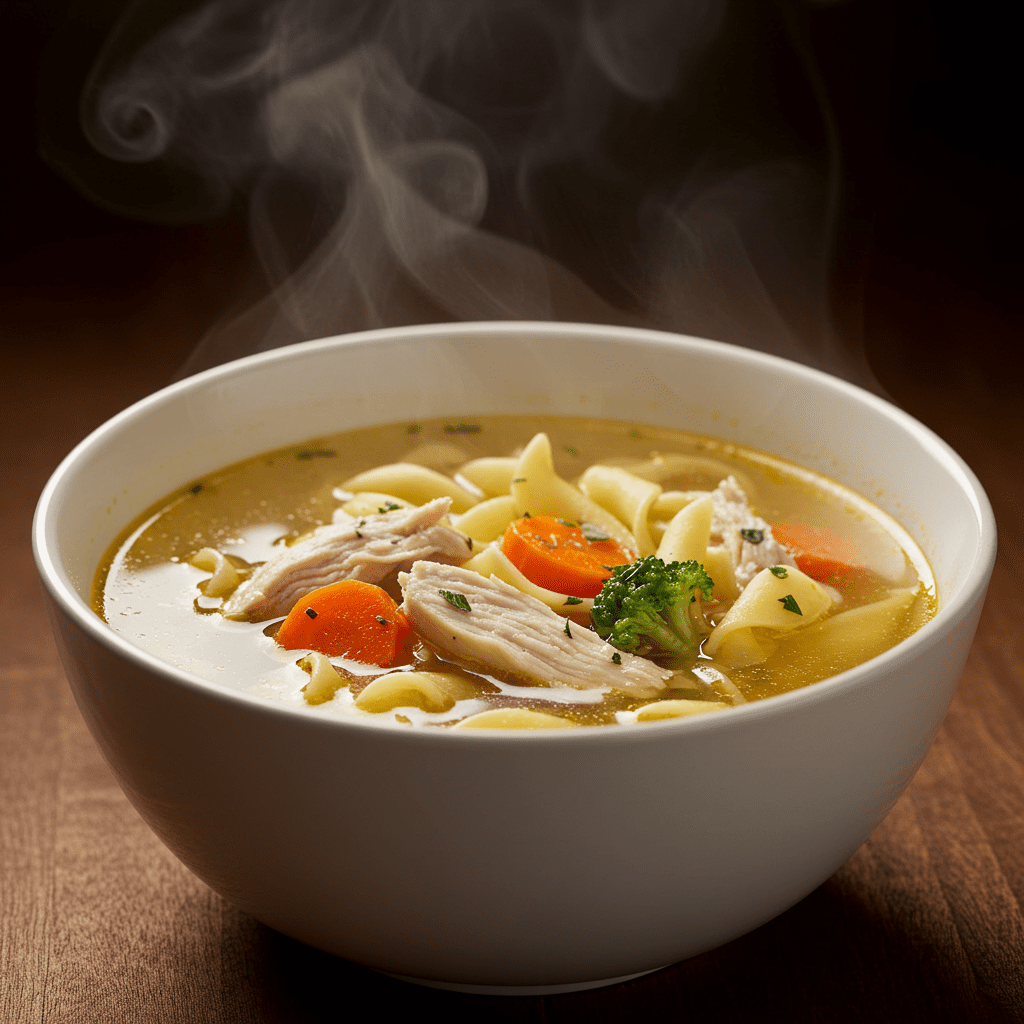
A great garnish does more than just make the bowl look pretty; it adds a final layer of texture and flavor that elevates the entire dish. Think of your bowl as a canvas and the garnishes as your final brushstrokes.
- Fresh Herbs: Finely chopped fresh cilantro is my top choice here. Its bright, citrusy notes cut through the richness of the broth and complement the spice perfectly. Fresh parsley or thinly sliced green onions are also fantastic for a milder, fresh finish.
- A Squeeze of Citrus: While the recipe already includes lemon juice, an extra lime or lemon wedge served on the side allows everyone to customize the brightness to their liking.
- A Drizzle of Oil: A tiny swirl of toasted sesame oil adds a wonderful nutty aroma and flavor that pairs beautifully with the ginger and sriracha.
- Add an Egg: For an extra boost of protein and a luxuriously creamy texture, top your soup with a jammy, soft-boiled egg.
- Extra Crunch: A sprinkle of crispy fried shallots or garlic can add a delightful textural contrast.
A Dietitian’s Breakdown of the Nutritional Benefits

This recipe is a powerhouse of balanced nutrition, designed to support your body when it needs it most. Here’s a quick breakdown from a dietitian’s perspective:
- Hydration: When you’re sick, staying hydrated is crucial. The soup’s primary ingredient is broth, which helps replenish fluids and electrolytes lost during illness. According to the American Heart Association, staying hydrated helps your heart pump blood more easily.
- High-Quality Protein: The chicken provides ample protein, essential for building and repairing tissues and supporting a healthy immune system. Protein is vital for muscle synthesis and overall recovery.
- Energy-Providing Carbohydrates: The noodles offer easily digestible carbohydrates, which are your body’s primary source of fuel. This provides the energy your body needs to fight off illness without overburdening your digestive system.
- Vitamins and Antioxidants: The carrots, celery, onion, garlic, and ginger are packed with vitamins (like Vitamin A from carrots) and powerful antioxidants that help combat inflammation and support cellular health.
Your Recipe Questions, Answered

This soup is a fantastic base for customization. Here are some answers to common questions you might have.
- Can I make this in a slow cooker or Instant Pot?
- Slow Cooker: Yes! Sauté the vegetables, garlic, and ginger on the stovetop first for best flavor. Then, transfer everything except the noodles, lemon juice, and sriracha to the slow cooker. Cook on low for 4-6 hours or high for 2-3 hours. Remove and shred the chicken, return it to the pot, and add the final ingredients. Cook noodles separately.
- Instant Pot: Use the ‘Sauté’ function for the vegetables and aromatics. Add the broth and chicken, then cook on high pressure for 10 minutes. Let the pressure release naturally for 10 minutes, then quick release. Remove and shred the chicken. Cook the noodles separately and stir in the lemon and sriracha at the end.
- How can I make this recipe gluten-free? It’s simple! Just substitute the egg noodles for your favorite gluten-free pasta. Rice noodles or cooked quinoa are also excellent gluten-free alternatives. Ensure your chicken broth is also certified gluten-free.
- What’s the best way to freeze this soup? Freeze the soup base (without the noodles) in a freezer-safe container or bag for up to 3 months. When you’re ready to eat, thaw it in the refrigerator overnight, reheat it on the stove, and serve it over freshly cooked noodles.
Conclusion
This spicy chicken noodle soup is so much more than a recipe; it’s a bowl of intentional comfort and wellness. By understanding the ‘why’ behind each ingredient—from the sinus-clearing capsaicin in the sriracha to the immune-supporting garlic and ginger—you’re not just cooking, you’re crafting a truly nourishing experience.
Whether you’re feeling under the weather or simply craving a cozy meal with a kick, this soup delivers. It’s a perfect example of how delicious and satisfying healthy eating can be, much like our popular creamy chicken broccoli soup. So go ahead, simmer a pot on the stove, and enjoy every restorative spoonful.

[…] the kind of side dish that steals the show and makes you feel fantastic, similar to how a spicy chicken noodle soup can be a secret wellness […]